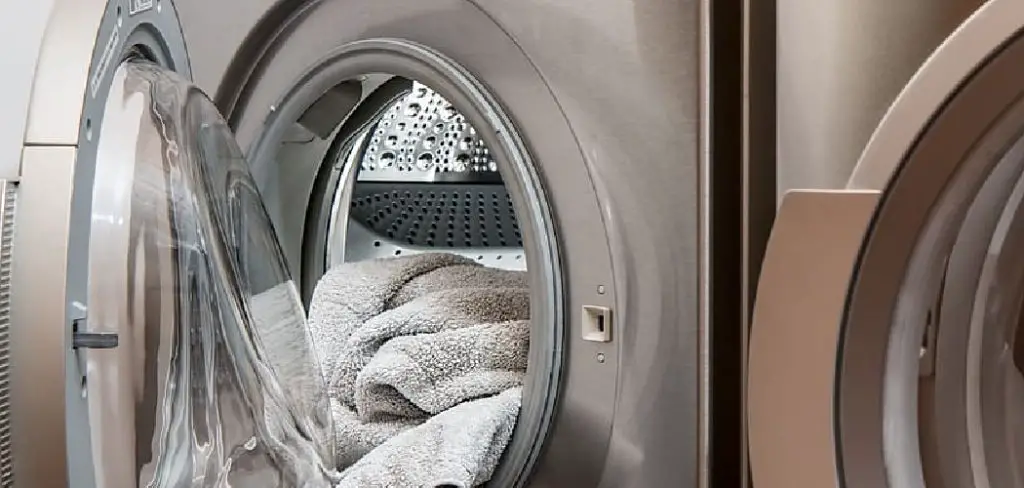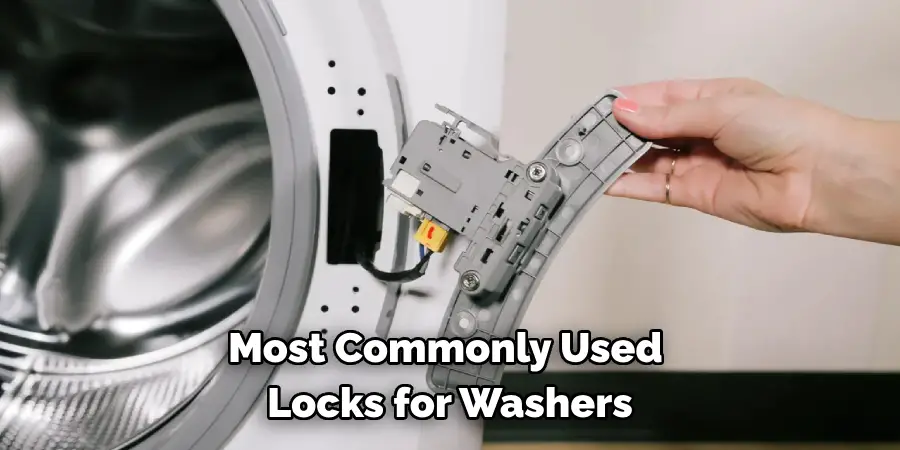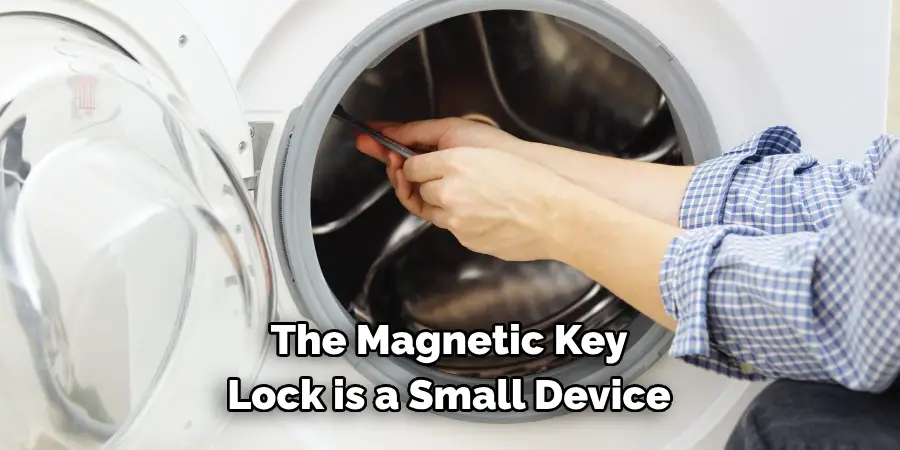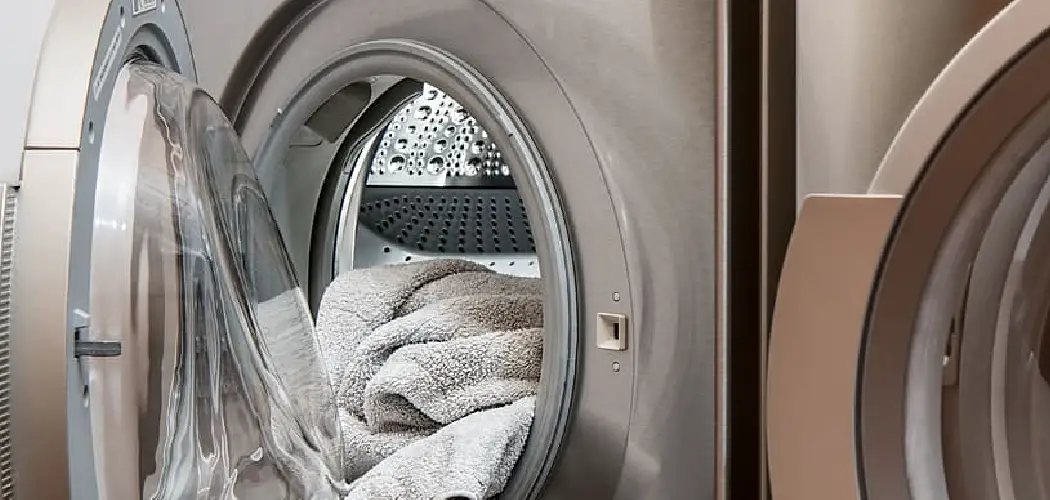We all know the struggle of trying to keep our clothes clean and organized, especially with all the challenges that come with living in a shared space. Not everyone can be trusted to respect your personal items, and that includes your washer and dryer. If you’re tired of washing your clothes only to find someone else has tossed their dirty laundry on top of yours, then you’re in luck. There are ways to lock your washer and dryer to protect them from unauthorized use. In this blog post, we’ll cover some of the different types of locks you can use and how to lock a washer and dryer from being used, so you can keep your clothes safe and sound.

Can You Lock a Washer and Dryer from Being Used?
Trying to prevent your washer and dryer from being used by unauthorized persons? It’s a common problem homeowners face – perhaps you’re tired of roommates or visiting family members using up your electricity and water bill. Luckily, you can prevent unwanted usage of your laundry machines. Most washers and dryers come with the option to lock the control panel.
This feature allows you to disable the buttons or touchscreen or even lock the entire machine. To unlock the control panel, you’ll need to enter a code or press a combination of buttons – this code will vary by manufacturer and model. Some machines also allow you to set a time delay so that the machine unlocks and becomes usable again after a certain amount of time. With these options, you’ll have peace of mind knowing that your laundry appliances are only being used when you want them to be.
Why Should You Lock a Washer and Dryer from Being Used?
Washers and dryers have become incredibly convenient appliances for people who need to do laundry. However, one thing that people often overlook is the importance of locking these appliances. Whether you live in a college dorm, an apartment building, or a shared house, keeping your laundry facilities secure is important, especially if there is a shared laundry room. If not locked, anyone could use your expensive detergent and, even worse, damage your clothes or the machines themselves.
A simple lock can provide peace of mind and ensure that only you and the people you trust have access to your washer and dryer. Locking up your appliances is a small but important step to take in safeguarding your possessions and maintaining their longevity.
How to Choose the Right Lock for Your Washer and Dryer
Before purchasing a lock for your washer and dryer, there are a few key factors to consider. These include the type of lock, budget, and level of security needed.
Type of Lock
As discussed earlier in this document, there are several types of locks available for washers and dryers, such as combination padlocks, magnetic key locks, electronic locks, and motion sensor locks. Each type has its own advantages and disadvantages, so it’s important to research and choose the one that best fits your needs.
Budget
Locks for washers and dryers can range from $10-$250, depending on the type and brand. It’s essential to set a budget before purchasing a lock to ensure you don’t overspend on a lock that has features you don’t need.
Level of Security
Consider your specific security needs when choosing a lock for your washer and dryer. If you live in an area with high crime rates, investing in a motion sensor lock may be worth the cost. However, if you are primarily concerned with preventing unauthorized usage, a combination padlock or magnetic key lock may suffice. It’s important to find the right balance between cost and security when choosing a lock for your appliances.
Overall, locking your washer and dryer is a simple but effective way to protect your property. By following the steps outlined in this document and considering your options carefully, you can find the perfect lock for your appliances that meets both your security needs and budget.
Protect Your Clothes: How to Lock a Washer and Dryer from Being Used
Option 1: The Spinner Lock
This is one of the most commonly used locks for washers and dryers. It’s a simple tool that is easy to install yourself and others to use. The spinner lock wraps around the knobs of your washer and dryer, making them impossible to turn on. These locks work best for top-loading washers and dryers that have knobs. Installing them is simple. You must wrap the lock around the knob and secure it with a key or combination code. A simple spinner lock can cost anywhere between $10-$20.

Option 2: The Door Lock
If you have a front-loading washer and dryer, your best bet is installing a door lock. This lock is a simple device that prohibits the door from being opened. To install it, you must first unscrew the bolts on the back of the washer or dryer, then place the door lock on and re-screw the bolts. Once this is done, the door will not open unless the lock is removed using a key or combination code. Depending on the brand, door locks can cost a little more over the spinner lock, ranging from $30-$50.
Option 3: The Alarm Lock Combo
This is one of the most advanced locks on the list. It prohibits unauthorized access to your washer and dryer and alerts you when someone tries to tamper with it. The lock typically costs upwards of $60, but it pays off with its advanced features.
This combo lock has an alarm that goes off if someone tries to break in, and it also has a sensor that can alert you when the door is open. The alarm can be silenced, so it’s not a nuisance while doing laundry, but if someone is trying to break in, it will sound and scare off unwanted guests.
Option 4: Combination Padlock
If you don’t want to drill into your washer or dryer, then a combination padlock is the perfect choice for you. Simply wrap the lock around the knobs, and set your combination. These locks are simple to install and use, and if you forget your code, they usually come with a backup key. Combination padlocks can range between $10-$30 depending on brand and style.
Option 5: Magnetic Key Lock
This is a great option for those who want a more subtle lock. The magnetic key lock is a small device that attaches to the front of your washer or dryer. It can easily be unlocked and locked with a magnetic key, making it easy to use but still secure. These locks are great for those who don’t want to draw attention to their washer or dryer and usually cost around $20-$30.

Option 6: Electronic Lock
This is the most advanced lock on the list. An electronic lock uses a combination code that can be changed as often as you like, making it virtually impossible to break into. Installing an electronic lock requires a bit of wiring, so it’s best to call a professional if you aren’t sure what you are doing. Depending on the brand and features, these locks usually cost anywhere from $50-$200.
Option 7: Motion Sensor Lock
The motion sensor lock is the most expensive option on this list but offers the most security. This lock uses a motion sensor to detect when someone is trying to use the washer or dryer and will sound an alarm if triggered.
The alarm can be silenced with a code, but it’s still loud enough to scare off intruders. Depending on the brand, these locks usually cost anywhere from $150-$250.
That’s it! You’ve now learned how to lock a washer and dryer from being used. Depending on your budget and security needs, you can choose one of the locks mentioned above to protect your appliances. With a bit of research, you’ll be able to find the perfect lock for your home!
5 Things You Need to Know Before Lock a Washer and Dryer from Being Used
1. Check the Manual
Before you lock your washer and dryer, you should always check the manual to see if there are any special instructions that you need to follow. Some models of washers and dryers have special locking mechanisms that must be used in order to prevent them from being used.
2. Remove the Lint Screen
You should also remove the lint screen from your dryer before you lock it. The lint screen is a small mesh screen that is located inside the dryer. This screen catches any lint or other debris that may be present in your clothes. If you do not remove the lint screen, it could become clogged and cause your dryer to overheat.
3. Unplug the Washer and Dryer
Once you have checked the manual and removed the lint screen, you will need to unplug the washer and dryer from their respective power sources. This will ensure they cannot be turned on while locked.

4. Lock the Doors
The next step is to lock the doors of the washer and dryer. Most models of washers and dryers have a small hole near the door handle that can be used to insert a padlock. Once the padlock is in place, the door will not be able to be opened, preventing anyone from using the appliance.
5. Label the Appliances
Finally, you should label the washer and dryer with a note explaining that they are locked and should not be used. This will help prevent anyone from accidentally using them while locked.
Benefits of Lock a Washer and Dryer from Being Used
As a homeowner, you want to protect your property and ensure that your appliances are properly maintained. One way to do this is by installing a lock on your washer and dryer. By doing this, you can prevent unauthorized usage and keep your laundry machines in excellent condition. A lock on your washer and dryer can also help avoid costly repairs and damages caused by individuals who misuse the appliances.
Additionally, it can provide peace of mind that your property is protected, giving you the confidence to leave your home unattended without worrying about the misuse of your valuable appliances. In short, investing in a lock for your washer and dryer can provide a wide array of benefits, so it’s a smart decision to make for any homeowner.
Common Misconceptions About Locking Your Washer and Dryer (And Why They’re Not True)
Misconception 1: “Locking My Washer and Dryer Is a Waste of Time and Money.”
Many people believe that installing a lock on their washer and dryer is unnecessary because they trust those who have access to their home. However, accidents can happen, and it only takes one curious guest or inexperienced house sitter to cause damage to your appliances. By locking them, you are not only protecting your property but also potentially avoiding costly repairs.
Misconception 2: “I’ll Just Hide My Washer and Dryer Instead of Locking Them.”
Hiding your washer and dryer may seem like a simpler solution than installing locks, but it doesn’t guarantee that they won’t be found or used by someone unauthorized. Plus, hiding appliances can create safety hazards as well, with the potential for items to fall or block ventilation.
Misconception 3: “I’ll Just Buy New Appliances If They Get Damaged.”
Replacing a washer and dryer can be expensive, especially if they are high-end models. By investing in a lock, you can potentially save yourself hundreds or even thousands of dollars in replacement costs.
Misconception 4: “Locking a Washer and Dryer Is Only Necessary for Multi-Family Homes.”
Even if you live in a single-family home, it’s still important to consider installing a lock on your washer and dryer. Guests, service professionals, or even potential burglars can all have access to your home and potentially cause damage to your appliances.
Overall, investing in a lock for your washer and dryer is a smart decision that can provide numerous benefits, including protecting your property and avoiding costly repairs. With the variety of options available, you can find one that suits your needs and budget. Don’t let common misconceptions deter you from taking this simple step to protect your home and appliances.

Conclusion
Don’t let your clothes be subjected to the whims of other people. Installing a lock on your washer and dryer is easy and inexpensive. The different locks mentioned in this blog post come in different styles and for different types of washers and dryers.
Depending on your budget and the type of washer and dryer, you can choose one of the four options and protect your clothes. Whether it’s a spinner lock, a door lock, an alarm lock combo, or a combination padlock, you can have peace of mind that your clothes are well protected every time you do laundry. Thanks for reading our post about how to lock a washer and dryer from being used.
You Can Check it Out to Bypass Whirlpool Dryer Start Switch

